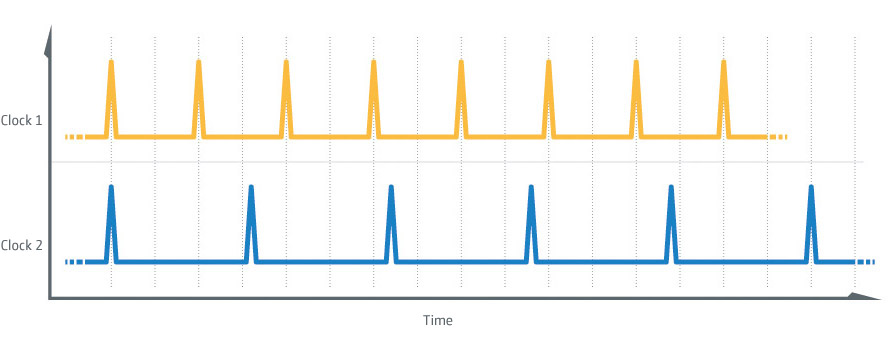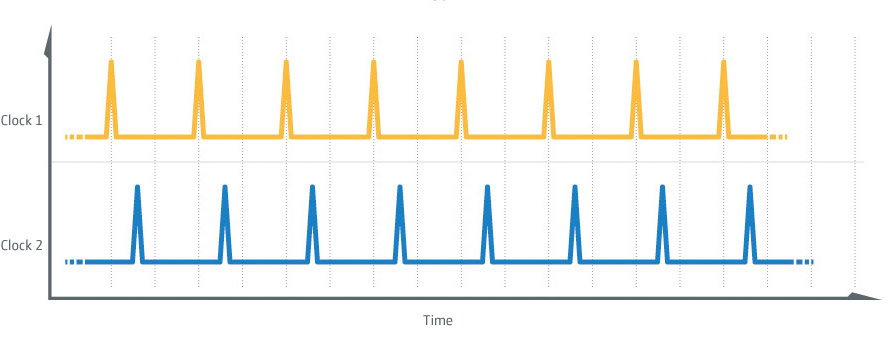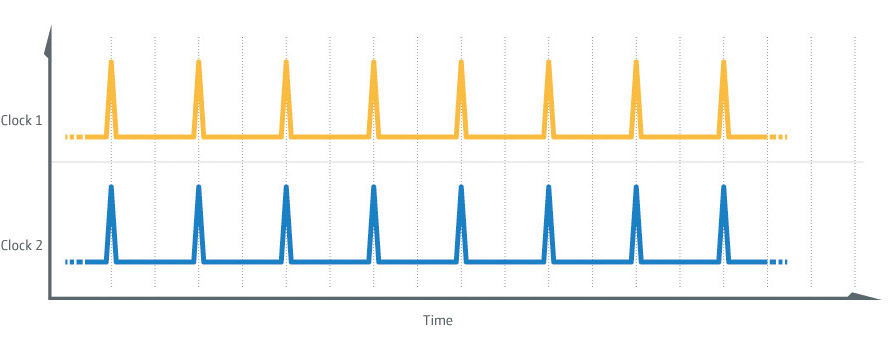March 29th, 2021
In Unison with Time: PTP and Syntonization
With PTP (Precision Time Protocol), the devil is in the detail. The punctual synchronization of device clocks within a distributed system can be rather complex. And so one might find that oftentimes synchronization may not entirely mean synchronization.
It gets even more complicated, when language puts additional obstacles in one’s path. On example are the two terms “synchronization” and “syntonization”. At first glance, both words have a similar structure as well as a related meaning. However, the difference can already be spotted in each word itself—while syntonization (“to have the same tone”) describes the matching of frequencies, “synchronization” covers events that happen at the same time. So how do we get from the same tone to the same time?
To start with, we look at two clocks, that do not have anything in common. Asynchronous, asyntonous—nothing really matches here at all:

Now in the following diagram that already looks better. Here we have two syntonized clocks within a network, which at least run at the same frequency. Even though they do output signals at the same time interval, the signals, however, are not necessarily produced congruently. When talking about PTP, this is called L1 (Layer 1) Sync, meaning a matching frequency of physical clocks at the hardware layer:

Accordingly, the next and last logical step is for the clocks to also produce their signals at the same time. Here, the two clocks are both syntonized as well as synchronized. Perfection!

Going beyond that, if ,for instance, time stamps need to be accurately compared as well, one can go a step further by having the clocks agree on the time of day including seconds, minutes and date. Thanks to syntonization, the accuracy of these time stamps is also increased.
It could be mentioned, that while syntonization is entirely optional for PTP (1588 v2), for the optimized gPTP (802.1AS) it is mandatory for all time-critical systems to be logically syntonized, meaning that time intervals are issued with the same frequency.
